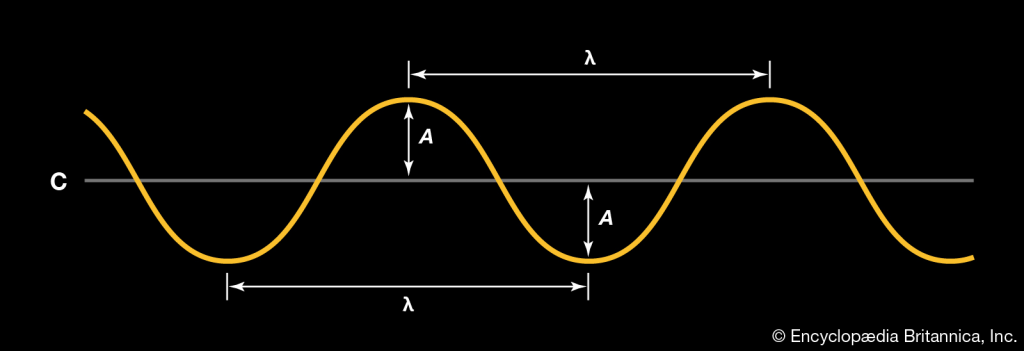You will have noticed that in a large number of live events, sound engineers place subwoofers close together either on the floor, on the side of the stage, or at the top of the line-array rig. Are there any benefits in doing so, and what exactly happens? Before exploring the answer, let’s first recall some basics of sound.
Sound Wavelength
First, let’s recall the definition of the speed of sound ‘C’ (at sea level, at 21° C / 70° F degrees, under normal atmospheric conditions. It is defined as C = f λ, where ‘f’ represents frequency and ‘λ’ wavelength and it equals to 344 m/s (1128 ft/s).
Now, what is a wavelength? In physics, the wavelength is the spatial period of a periodic wave—the distance over which the wave’s shape repeats. It is the distance between consecutive corresponding points of the same phase on the wave, such as two adjacent crests, troughs, or zero crossings.
When a sound propagates through air, the air is compressed or rarefied in waves that travel out from the audio source. When those compressed or rarified areas of air hit your eardrum, it vibrates in sympathy with those compression waves in the air and allows you to hear. The wavelengths of audible frequencies to the human ear (20 Hz – 20 kHz) are thus between approximately 17 m (55.8 ft) and 17 mm (0.0558 ft), respectively.

Mutual Coupling Phenomenon
Mutual coupling is a physical phenomenon that occurs, theoretically, between all transducers, irrespective of their sizes. However, this article focuses on the mutual coupling occurring specifically between low frequency transducers.
The phenomenon of mutual coupling occurs when two, or more, transducers are reproducing the same signal, having their acoustic centers close together and pointing in the same direction at wavelengths smaller than the distance between their acoustic centers. In this situation, the combined sound pressure is propagating forward like one single waveform, as if all transducers are now behaving like one larger one.
Considering two transducers only, the principle is that their acoustic centers must be close, between 1/4 wavelength and 1/2 wavelength of the frequency they are reproducing. The shorter the wavelength (higher frequency), the smaller the necessary distance between the two acoustic centers to build up mutual coupling.

Let’s now look at two different situations. First, if we setup two transducers next to each other at a distance of more than the half wavelength of the reproduced frequency, the average on- and off-axis measured output adds up to 3 dB (double the power). Now, with two transducers close enough to benefit from the mutual coupling effect, the measured output adds up to 6 dB.
Applying the Benefits
In order to illustrate the phenomenon above, let’s consider the specifications of a QSC KS118 active subwoofer. Its frequency response (-6 dB) extends from 41 Hz to 98 Hz. So, as stated earlier, we need to consider the highest frequency the subwoofer can produce to calculate the shortest wavelength (using the formulae C = f λ).
½ wavelength at 98 Hz = 1.75 m (5.75 ft)
Therefore, as long as two KS118 subwoofers have their acoustic centers placed at a distance shorter or equal to 1.75 m (5.75 ft), the mutual coupling phenomenon will take place with the benefit of an additional output level of 6 dB.
Conclusion
As one can see, it is relatively simple to benefit from mutual coupling with subwoofers, as they can easily be placed close to each other at a distance far shorter than the corresponding half wavelength of the highest frequency they can reproduce. The benefit of achieving high SPL at low frequencies with a reduced number of subwoofers is what motivates touring companies, even productions, DJ’s and installers to place subwoofers close to each other. A clever way to get additional, free decibels!

Most excellent!